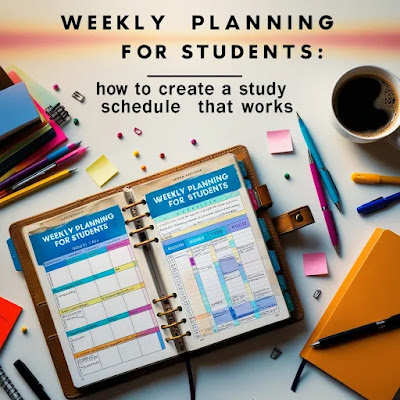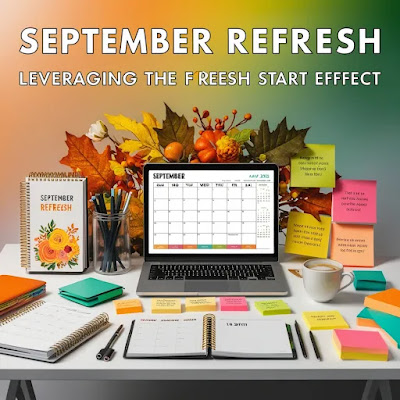5 Simple Mindfulness Exercises for Busy Professionals
5 Simple Mindfulness Exercises for Busy Professionals
In today's fast-paced world, busy professionals often find themselves overwhelmed with responsibilities and deadlines. Amid the hustle and bustle, it's easy to neglect mental well-being. However, incorporating mindfulness exercises into your daily routine can significantly enhance focus, reduce stress, and improve overall productivity. Here are five simple mindfulness exercises designed specifically for busy professionals.
1. Mindful Breathing
Understanding Mindful Breathing
Mindful breathing is a fundamental practice in mindfulness. It involves focusing your attention on your breath, observing each inhale and exhale without trying to change it. This exercise helps anchor your mind to the present moment, reducing anxiety and stress.
How to Practice Mindful Breathing
1. Find a Quiet Space: Sit comfortably in a chair or on the floor. Ensure your back is straight but relaxed.
2. Close Your Eyes: Gently close your eyes to minimize distractions.
3. Focus on Your Breath: Pay attention to your natural breathing pattern. Notice the sensation of air entering and leaving your nostrils.
4. Count Your Breaths: Start by counting each breath cycle. Inhale (1), exhale (2), and so on up to ten, then start over.
5. Return to Focus: If your mind wanders, gently bring your focus back to your breath without judgment.
Benefits for Professionals
Mindful breathing can be practiced anywhere, even during short breaks at work. It helps in calming the mind, improving concentration, and promoting emotional stability, which are essential for maintaining productivity and handling workplace challenges effectively.
2. Body Scan Meditation
Understanding Body Scan Meditation
Body scan meditation involves mentally scanning your body from head to toe, paying close attention to any sensations, tension, or discomfort. This exercise fosters a deeper connection with your body and promotes relaxation.
How to Practice Body Scan Meditation
1. Lie Down or Sit Comfortably: Choose a comfortable position, lying on your back or sitting with your feet flat on the floor.
2. Close Your Eyes and Breathe Deeply: Take a few deep breaths to relax.
3. Focus on Different Body Parts: Start from the top of your head and gradually move down to your toes. Notice any sensations, tension, or areas of discomfort.
4. Breathe Into Tension: If you encounter tension, visualize your breath flowing into that area and releasing the tightness.
5. Move Slowly: Spend a few moments on each body part before moving to the next.
Benefits for Professionals
Body scan meditation is particularly beneficial after a long day of work. It helps in releasing physical tension accumulated throughout the day, improves body awareness, and promotes a sense of calm and relaxation, aiding in better sleep and overall well-being.
3. Mindful Walking
Understanding Mindful Walking
Mindful walking is a form of meditation where you focus on the act of walking, paying attention to the sensations and movements involved. This practice integrates mindfulness into a physical activity, making it perfect for busy professionals who may find it challenging to sit still.
How to Practice Mindful Walking
1. Choose a Path: Find a quiet place to walk, whether indoors or outdoors.
2. Start Slowly: Begin walking slowly, paying attention to each step.
3. Focus on Sensations: Notice the sensation of your feet touching the ground, the movement of your legs, and the rhythm of your breath.
4. Engage Your Senses: Be aware of your surroundings, the sounds, sights, and smells.
If your mind starts to wander, gently bring your attention back to the act of walking.
Benefits for Professionals
Mindful walking can be incorporated into daily routines, such as walking to meetings or during lunch breaks. It helps in reducing stress, enhancing mood, and improving physical health, making it an excellent way to stay grounded and energized throughout the day.
4. Gratitude Journaling
Understanding Gratitude Journaling
Gratitude journaling involves writing down things you are thankful for, which shifts your focus from what's going wrong to what's going right. This practice fosters a positive mindset and reduces stress.
How to Practice Gratitude Journaling
1. Choose a Time: Set aside a few minutes each day, preferably in the morning or before bed.
2. Find a Quiet Place: Sit in a quiet spot with your journal.
3. Reflect on Your Day: Think about things you are grateful for. They can be as simple as a pleasant conversation, a good meal, or a successful meeting.
4. Write Them Down: List at least three things you are thankful for each day.
5. Review Regularly: Periodically review your entries to remind yourself of the positive aspects of your life.
Benefits for Professionals
Gratitude journaling enhances emotional resilience, boosts mood, and promotes a positive work environment. By focusing on positive experiences, professionals can improve their overall job satisfaction and productivity.
5. Mindful Eating
Understanding Mindful Eating
Mindful eating involves paying full attention to the experience of eating, noticing the flavors, textures, and sensations of food. This practice encourages a healthier relationship with food and can improve digestion and enjoyment of meals.
How to Practice Mindful Eating
1. Choose a Meal or Snack: Select a meal or snack to eat mindfully.
2. Eliminate Distractions: Turn off electronic devices and sit down at a table.
3. Observe Your Food: Take a moment to look at your food, notice the colors, shapes, and smells.
4. Eat Slowly: Take small bites and chew thoroughly, paying attention to the taste and texture.
5. Savor Each Bite: Focus on the experience of eating, noticing how the food feels in your mouth and how your body reacts.
Benefits for Professionals
Mindful eating can be practiced during lunch breaks or any meal. It helps in reducing overeating, improving digestion, and enhancing the overall enjoyment of food. By taking the time to eat mindfully, professionals can also use this as a moment to relax and recharge.
Conclusion
Incorporating mindfulness exercises into your daily routine doesn't require significant time or effort, but the benefits are substantial. These simple practices can help busy professionals reduce stress, enhance focus, and improve overall well-being. By dedicating just a few minutes each day to mindfulness, you can create a more balanced, productive, and fulfilling professional life.
FAQs
1. How long does it take to see the benefits of mindfulness exercises?
The benefits of mindfulness exercises can be felt immediately in terms of relaxation and stress reduction. However, for more profound changes such as improved focus and emotional resilience, consistent practice over a few weeks is often necessary.
2. Can mindfulness exercises be done at work?
Yes, many mindfulness exercises, such as mindful breathing and mindful walking, can be easily integrated into your workday. These practices can be done during breaks, in between meetings, or even at your desk.
3. What if I don't have time for mindfulness exercises?
Mindfulness exercises can be brief and still effective. Even taking a few moments to focus on your breath or practicing mindful eating during a meal can make a significant difference.
4. Do I need any special equipment for mindfulness exercises?
No special equipment is needed for mindfulness exercises. All you need is a quiet space and a few minutes of your time.
5. How can I stay consistent with mindfulness practices?
Start small and set realistic goals. Incorporate mindfulness exercises into your daily routine, such as during your morning routine or before bed. Using reminders, such as phone alarms or sticky notes, can also help maintain consistency.
By integrating these mindfulness exercises into your daily life, you can cultivate a calmer, more focused, and productive professional experience.











